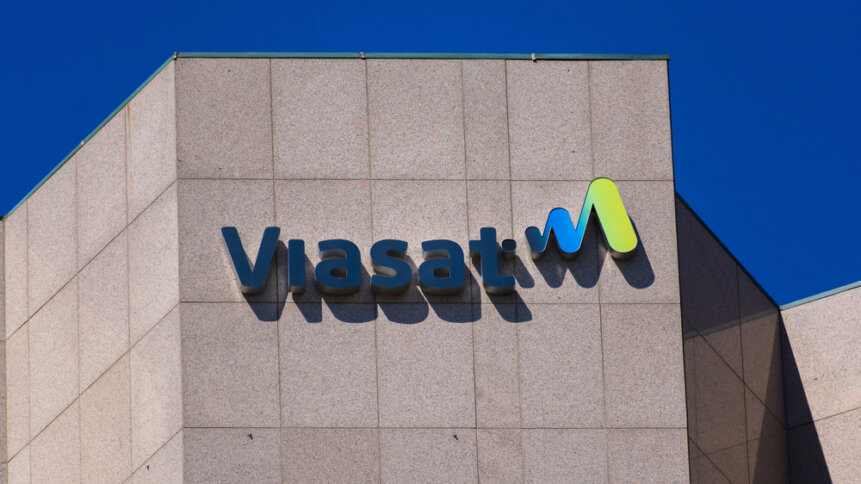Viasat: 800 jobs cut in latest tech layoffs following acquisition of Inmarsat

• Viasat announces new tech layoffs.
• Acquisition of Inmarsat opens up new opportunities.
• Positive financial predictions make tech layoffs surprising.
On November 3rd 2023, US-based satellite communications company Viasat announced that it was cutting 800 jobs, a substantial 10 percent of its entire workforce. According to Viasat, these latest tech layoffs will be “spread across the business in terms of geographies and divisions,” with the move being described as a “rationalization of roles in its global business, to achieve both operational and cost efficiencies.”
This mass layoff follows Viasat’s acquisition of British-based Inmarsat, a satellite operator, on May 30 for $7.1 billion. It is estimated that these tech layoffs will result in cost savings of approximately $100 million a year, beginning mainly in the Fiscal Year (FY) 2025. It is also estimated that these savings will allow Viasat to achieve a CapEx target of around $1.4-to-$1.5 billion, including capitalized interest.
News of mass tech layoffs is never positive, but Viasat has big plans that require drastic actions. The company’s main aim is to combine its assets with Inmarsat to deliver important safety and connectivity services across aviation, maritime, government and commercial divisions. Unfortunately, these strategies require a reduction in the workforce.

Inmarsat HQ in London.
While mass savings are forecasted, to achieve these goals, Viasat expects to be hit with charges of around $45 million. These charges are likely to take place during the second half of FY2024.
According to Guru Gowrappe, president of Viasat, the company’s prime focus since acquiring Inmarsat has been to accelerate its “leading role in global mobile satellite communications by converging [its] technologies and organizational structures to deliver enhanced products and services to customers.” He continued, “We will continue working to better unify our go-to-market approach, and maximize operational and capital productivity.”
The decision to cut jobs has been a “very difficult one, and not something we take lightly,” Gowrappe said, adding that the company’s departing workers have been “integral to Viasat’s success story.” Whether this praise is enough for those who have lost their jobs, we somehow don’t think so.
Viasat’s headquarters will continue to be in Carlsbad, California, but Inmarsat’s London Office will act as the global international business headquarters for the combined business. Even those working at the Carlsbad headquarters have been affected, with 160 roles due to be lost.
Gowrappe has insisted that these tech layoffs are essential in helping the company achieve long-term success. It may be no coincidence that Viasat is also finalizing insurance claims on two of its 19 satellites (ViaSat-13 and Inmarsat-6 F2) in relation to subsystem anomalies.
Viasat also has another ten spacecraft that are still under construction, but are planned to be launched by 2027. With these upcoming projects and insurance claims, it seems Viasat has had little alternative other than lay off its staff to save costs.
Observers could be forgiven for thinking that Viasat’s financial health is in some strife, but this does not seem to be the case. Recent data indicates the company’s net worth is on the rise, with a current market cap of £2460 million. Over the last year, Viasat’s revenue growth (as of Q1 2024) has been 14.02%. In addition, its quarterly revenue growth for Q1 2024 was a significant 35.6%.
Based on these figures, Viasat’s financial fortunes are expected to continue to rise, showing signs of a bright future. That means the company’s tech layoffs have come as a surprise to many.

The number of people affected by tech layoffs just keeps rising in 2023.
On closer inspection though, Viasat has been spending substantial amounts and operating with a cloud of debt over its shoulders.
According to several analysts, Viasat will almost certainly face certain challenges, but overall, its financial future looks quite positive.
Viasat’s future

Viasat’s tech layoffs may not be the last from major companies in 2023.
The acquisition of Inmarsat comes with several significant implications for Viasat. The most obvious has been the vast expansion of Viasat’s satellite fleet and its presence in the satellite communications market, particularly serving aviation, enterprise, and maritime clients. This is welcome growth for Viasat as competition in these sectors has been intensifying in recent years, with the arrival of newcomers such as OneWeb and Starlink, all targeting the same business-to-business customer base.
Thanks to Viasat’s acquisition, it now possesses the licences that Inmarsat previously held for electromagnetic spectrum usage. These licences, awarded by regulatory bodies like the FCC in the US, play a critical role in preventing interference between different satellite operators.
Acquiring these licences is no easy feat and is highly competitive, often involving substantial financial investments. Thanks to its purchase of Inmarsat, Viasat has now gained access to the world’s most extensive range of coordinated L-band spectrum, opening up numerous new opportunities for the company.
One of the potential applications for these newly acquired frequencies is in satellite-connected phones. For example, Apple’s iPhone 14 features an “Emergency SOS” function that connects to the Globalstar satellite network when cellular service is unavailable. British phone manufacturer Bullitt has already developed phones capable of sending text messages through Inmarsat’s GEO satellite network.
Given the increasing interest and investment from various technology companies in direct-to-device satellite communication, Viasat is now well-positioned to become a significant player in this evolving field.











